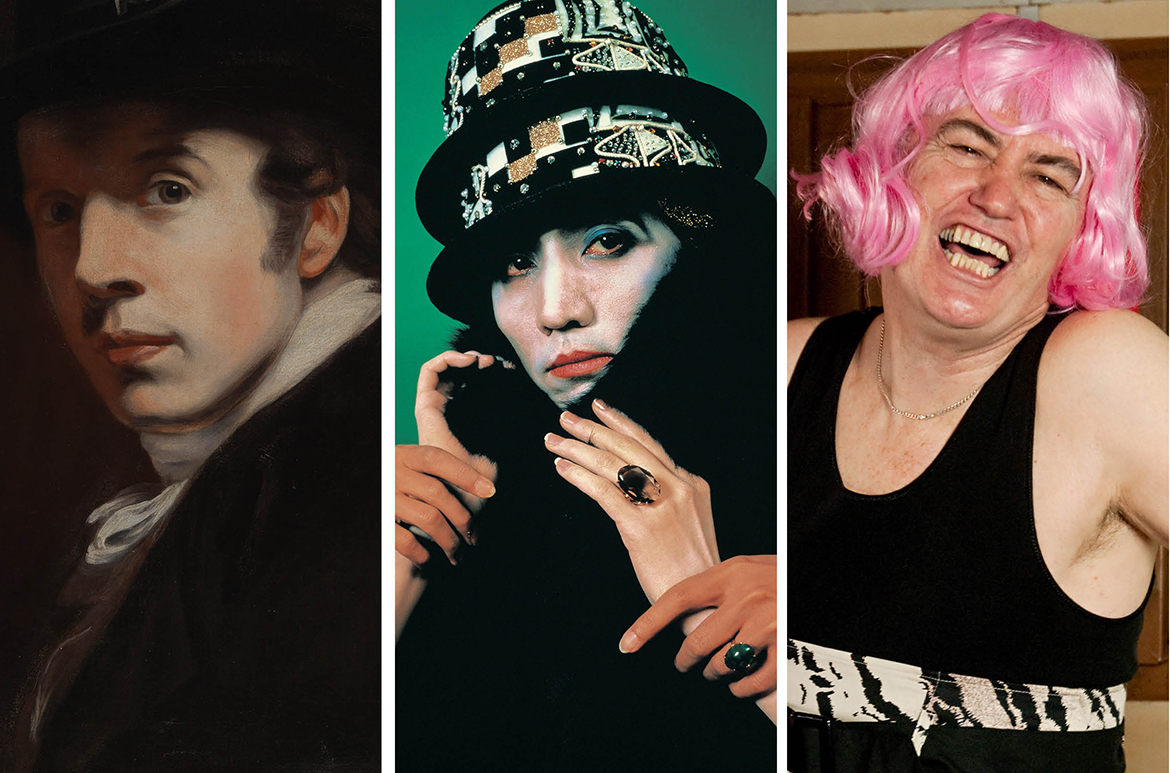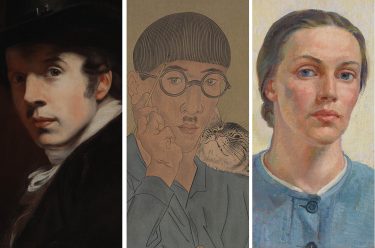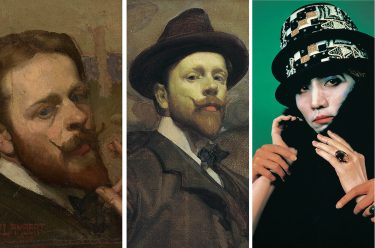The exhibition ‘Looking Out, Looking In: Exploring the Self-Portrait’ considers the complex and fascinating genre of the self-portrait — a distinct form of portraiture in which subject and artist are one, here we examine the enduring human interest in the self-image, revealing artistic tendencies towards both introspection and flamboyance.
‘Looking Out, Looking In’ is devised against the backdrop of contemporary ‘selfie’ culture. We have become increasingly attuned to the self-image through social media, reality TV and other communication networks, providing a context in which to consider self-portraiture more generally. The exhibition includes artworks that reflect these contemporary trends, as well as earlier examples of the genre. Seen together, the works reveal cultural shifts and universal themes. While some of the artists represent themselves in self-effacing ways, others seek to project a more flamboyant image.
British painter John Opie’s Self portrait c.1780 (illustrated) is the earliest artwork in the exhibition, and dates from a time when portraits were judged by their supposed capacity to evoke a sitter’s ‘likeness’ and assumed to reveal something of their character. In the twentieth century, modern artists tested these assumptions, moving away from the ideal of representation. From the 1960s, artists increasingly questioned the concept of an unchanging identity, bringing into view a greater diversity of human experiences and questioning the validity of racial and gender-based stereotypes. Despite or, perhaps, because of these challenges, and amid the flourishing cult of self-hood, the self-portrait has remained a relevant and vibrant field of creative practice.
John Opie ‘Self portrait’ 1780
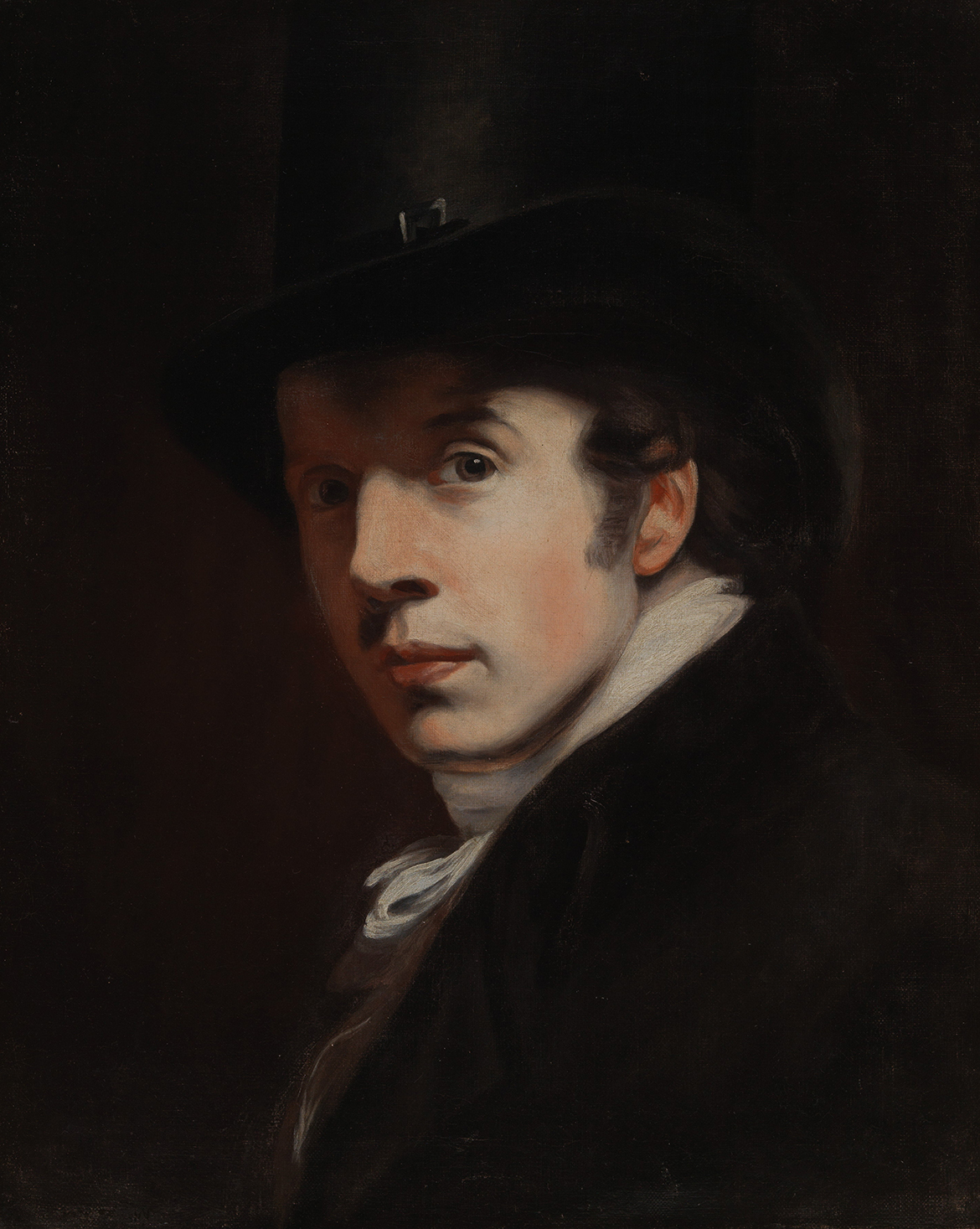
Strike a pose
Grouped thematically rather than chronologically and with an emphasis on contemporary art, the artists included in ‘Strike a pose’ assume the posture of the Grand Manner or ‘swagger’ portrait, exemplified by George Lambert’s The artist and his wife 1904 (illustrated). These paintings are juxtaposed against Yasumasa Morimura’s modern-day parody Doublonnage (Marcel) 1988 (illustrated), which riffs on art history and the photographs of Marcel Duchamp, disrupting constructs of gender and race.
George W Lambert ‘The artist and his wife’ 1904
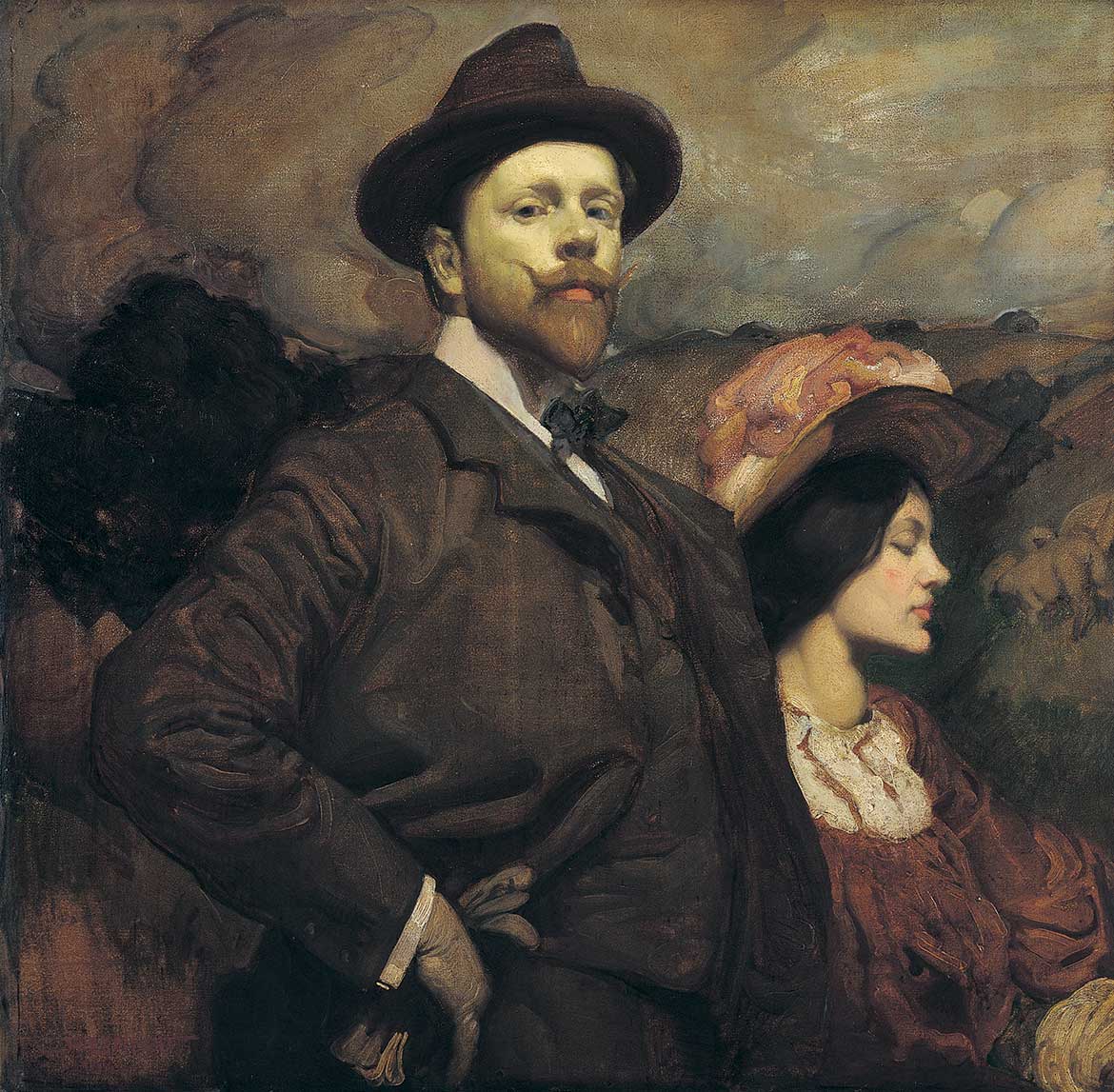
Yasumasa Morimura ‘Doublonnage (Marcel)’ 1988
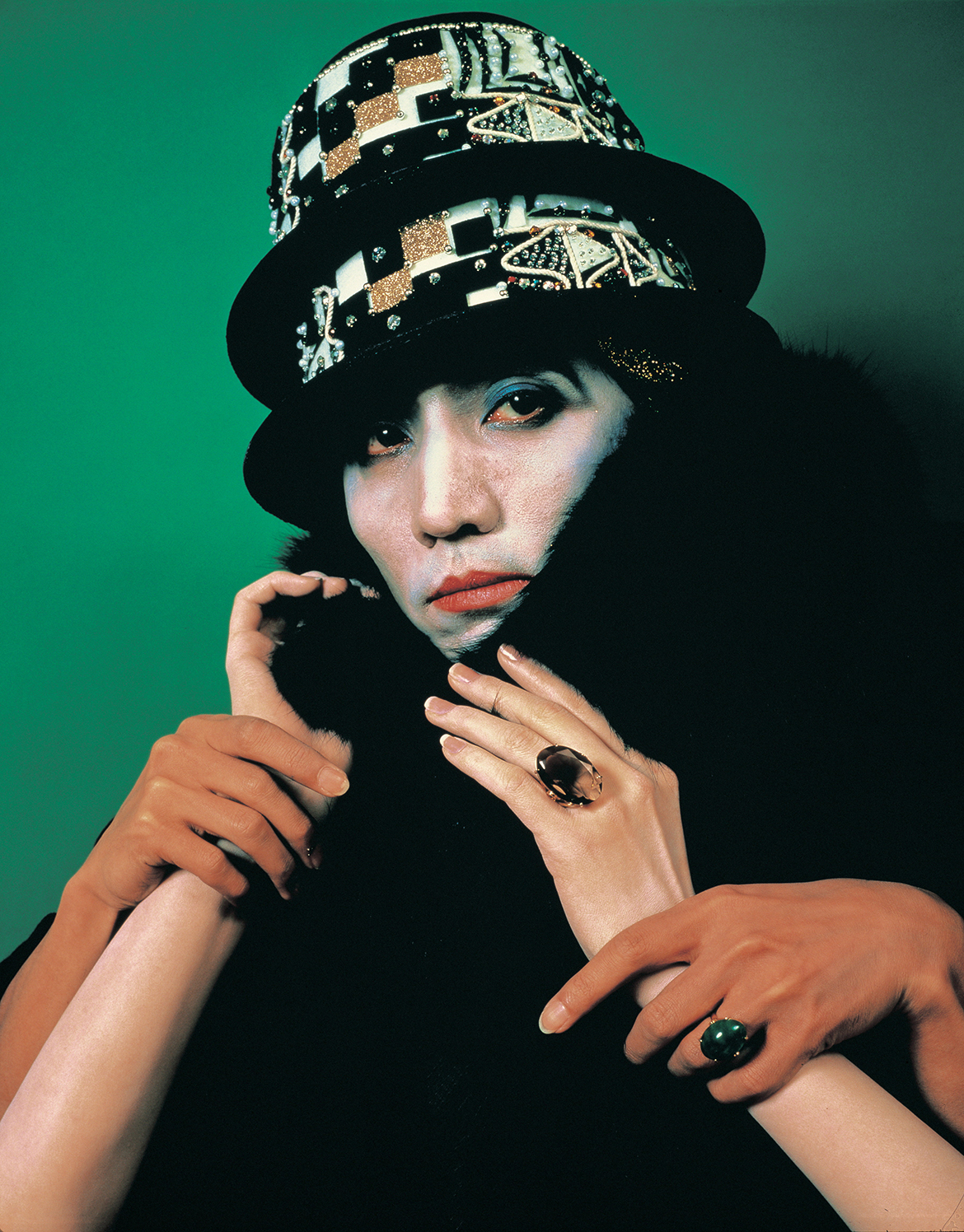
Role play
Parody is the overarching theme of ‘Role play’, which includes artworks that contest the notion of individuality, and the idea that a self-portrait can somehow be indicative of a unique and cohesive identity. Luke Roberts’s photograph At the Bar of the Pub with no Beer 2009 (illustrated), for example, is part of an ongoing series that has seen him adopt a variety of guises through stance and dress. Roberts’s artworks are at once fabrications and reflective of his sexuality, highlighting the fluidity of gender and contesting prescriptive typecasting. In Venus #7 2007 (illustrated), Queensland artist and Badtjala woman Fiona Foley rejects what she describes as ‘colonial Australia’s pigeonholing of Aboriginal women as easy sexual targets but not marriageable’1 and the tradition of ethno-eroticism. Foley identifies herself only by her clothed lower body and a distinctive pair of red heels, liberating herself from the shackles of prescribed racial and sexual stereotypes. She denies the spectator the gratuitous pleasure of looking upon her naked form, an act typically associated with viewing classical depictions of the goddess Venus. Instead, Foley situates herself on a city boardwalk alongside the Brisbane River, representing an empowered and confident woman at home in this urban environment.
Luke Roberts ‘At the Bar of the Pub with no Beer’ 2009

Fiona Foley ‘Venus #7’ 2007

The composite self
Other groups within the exhibition similarly expand on concepts of self-portraiture. ‘The composite self’ explores the multidimensional nature of identity, and the idea that our sense of self is informed by numerous influences, including our social circles and familial ties. For example, Vincent Namatjira’s double portrait Albert and Vincent 2014 (illustrated) pays homage to his revered great-grandfather, the renowned Arrernte watercolourist Albert Namatjira, and the artistic dynasty he initiated at Ntaria (Hermannsburg).
Vincent Namatjira ‘Albert and Vincent’ 2014
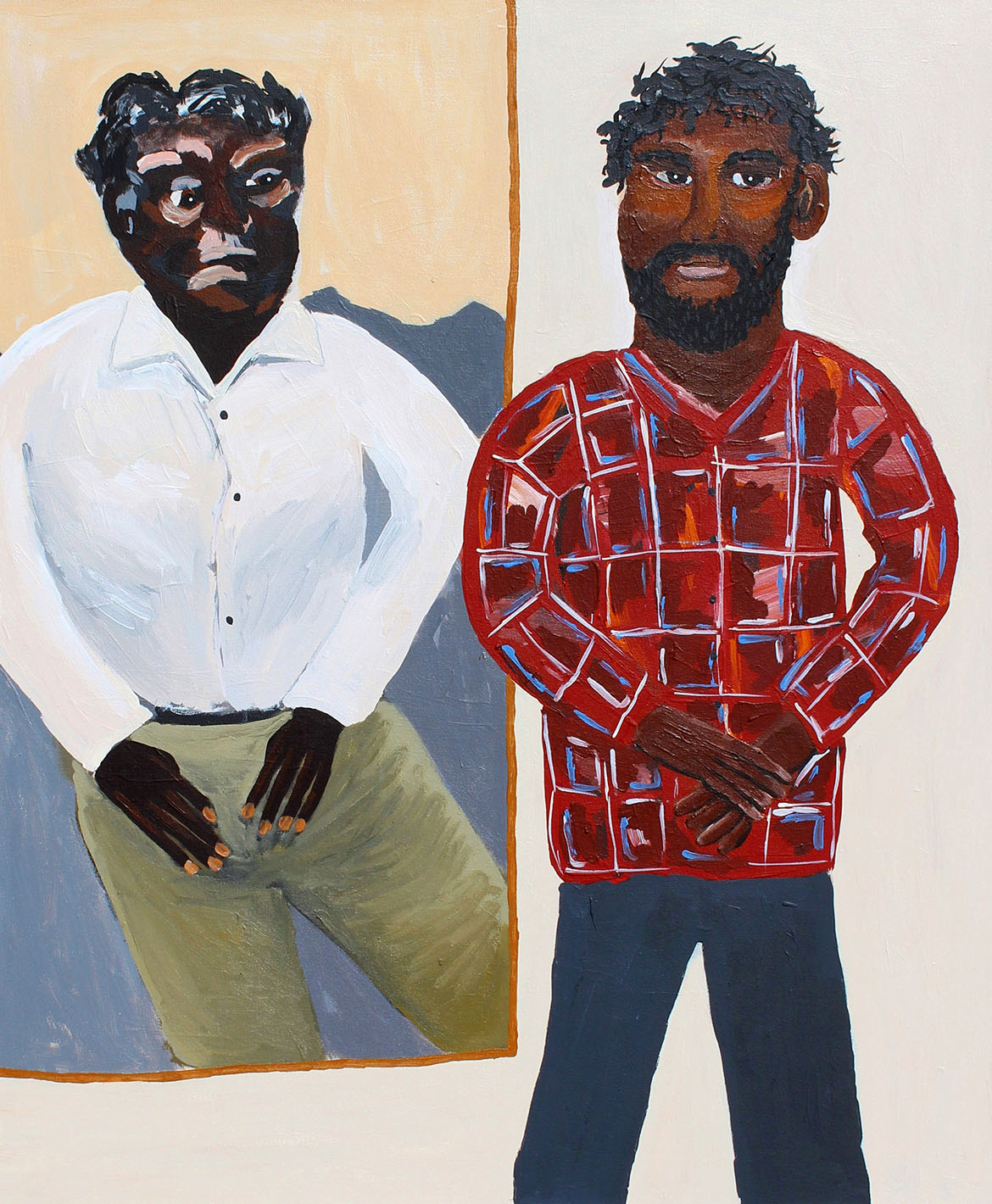
In the Flesh
‘In the Flesh’ examines the body as a site of self-assertion and empowerment, with works ranging from traditional representations such as Marjorie Fletcher’s bronze Self-torso 1934 (illustrated), to Justine Cooper’s video Rapt 1998, in which she maps her internal organs via an MRI scan.
Marjorie Fletcher ‘Self-torso’ 1934
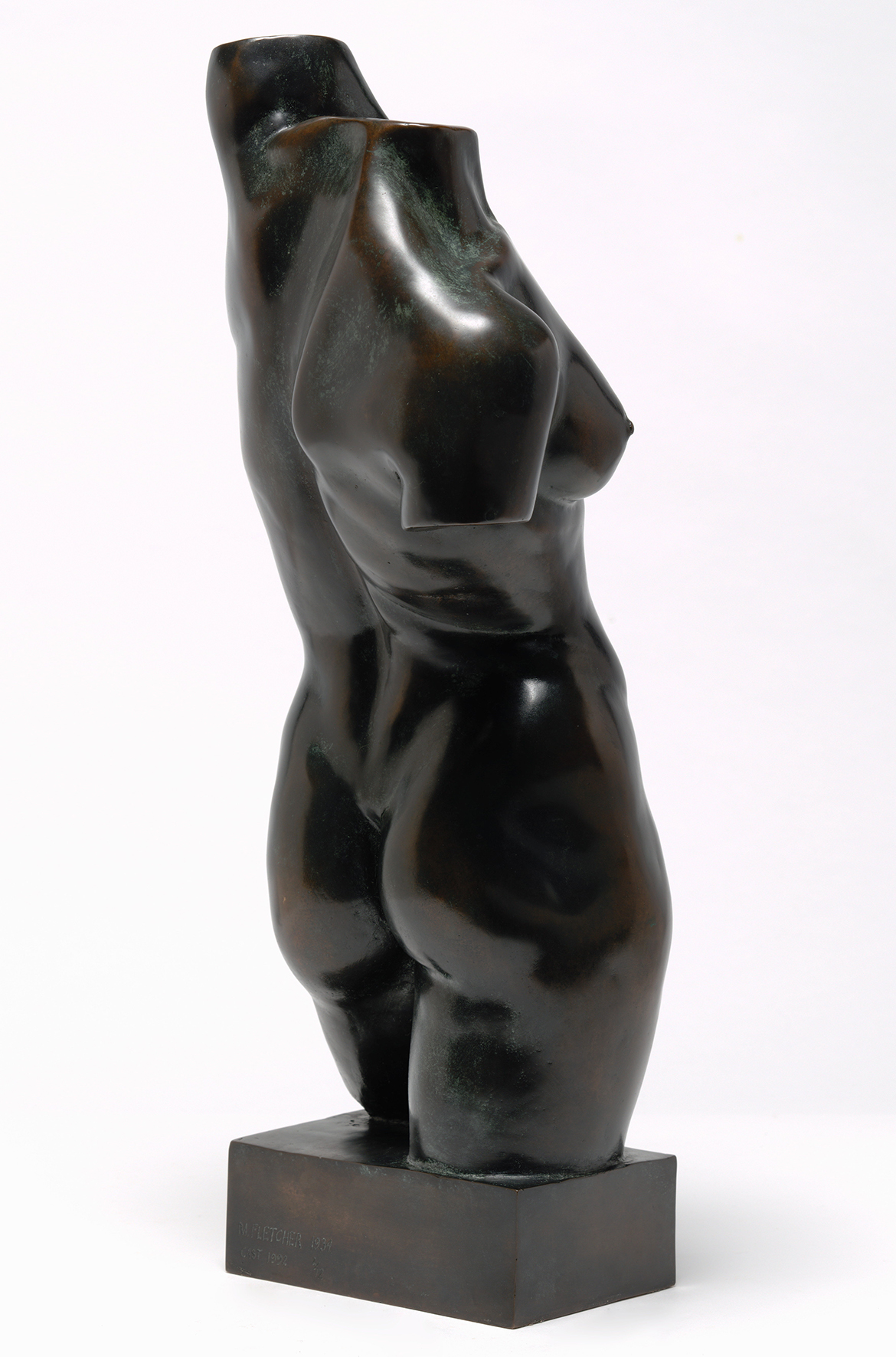
Altered states
The artists featured in ‘Altered states’ explore the variability of the self-image, whether through masking or distortion. Artworks include surrealist James Gleeson’s painting Structural emblems of a friend (Self portrait) 1941 (illustrated); a panoramic drawing by Mike Parr in which he disrupts the idea of a definitive, unified self; and Laith McGregor’s humorous video in which he transforms his face with the aid of a ball-point pen. Describing the work, McGregor has explained: ‘The characters I play in Maturing (illustrated) could relate to anyone. I only hope to be able to project this elusive state and locate it within a coherent context that relates to masculinity, its absurdity and me’.2
James Gleeson ‘Structural emblems of a friend (Self portrait)’ 1941

Laith McGregor ‘Maturing’ 2008
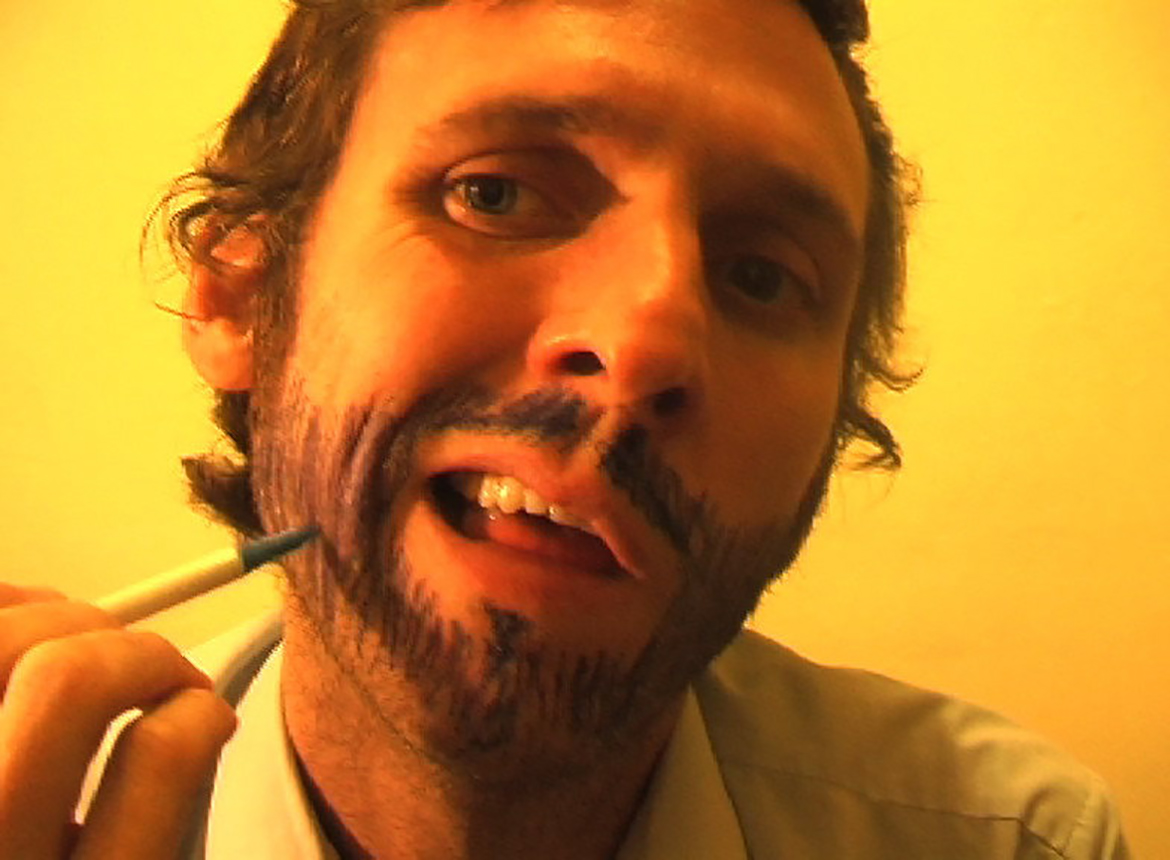
These main themes are augmented by smaller groups of works unified by medium, subject matter or approach. They include works in which the artist has captured themselves in profile; photographs that consider the form’s documentary value and play on the relationship between camera and photographer; and nonrepresentational artworks by the late John Nixon in which he used a self-determined range of methods and materials to represent himself, with the repeated monochromatic woodblocks
being a summary of principles that guided and defined him.
‘Looking Out, Looking In’ locates the self-portrait as a dynamic genre responsive to larger societal concerns, and intrinsically linked to the collective desire to picture and comprehend ourselves. In an age when digital technology has transformed the way we live and interpret our lives, this exhibition offers a broad and accessible setting in which to consider our contemporary obsession with self.
Michael Hawker is Curator, Australian Art to 1980, QAGOMA
Samantha Littley is Curator, Australian Art, QAGOMA
Endnotes
1 Fiona Foley, quoted in Bruce Johnson McLean, ‘Acquisition assessment – Sea of love; Venus’ [Indigenous Australian art acquisition files], 5 November 2008, QAGOMA Research Library.
2 Laith McGregor, ‘Laith McGregor: Maturing’ [artist statement], Centre for Contemporary Photography, Melbourne, August 2009, <https://ccp.org.au/exhibitions/all/maturing-2009>, viewed June 2021.
‘Looking Out, Looking In: Exploring the Self-Portrait’ / 11 March – 6 August 2023 / Queensland Art Gallery, Gallery 4
Acknowledgment of Country
The Queensland Art Gallery | Gallery of Modern Art (QAGOMA) acknowledges the traditional custodians of the land upon which the Gallery stands in Brisbane. We pay respect to Aboriginal and Torres Strait Islander elders past and present and, in the spirit of reconciliation, acknowledge the immense creative contribution Indigenous people make to the art and culture of this country. It is customary in many Indigenous communities not to mention the name of the deceased. All such mentions and photographs on the QAGOMA Blog are with permission, however, care and discretion should be exercised.
#QAGOMA
